Top 5 back-to-school driving safety tips
Back-to-school. It’s a time of increased traffic, stopped buses on your drive to work and crosswalks full of children walking to school. All good reasons to take extra precautions while driving at or near a school zone.
Keeping students safe is every driver’s responsibility, not just the bus drivers. So we’re sharing some back-to-school safety tips for drivers.
Let’s get started.
Obey the school bus rules
Many students rely on the bus for transportation to and from school. With elementary, middle school and high school often starting at different times, chances are, you’re going to encounter one or two buses on the road.
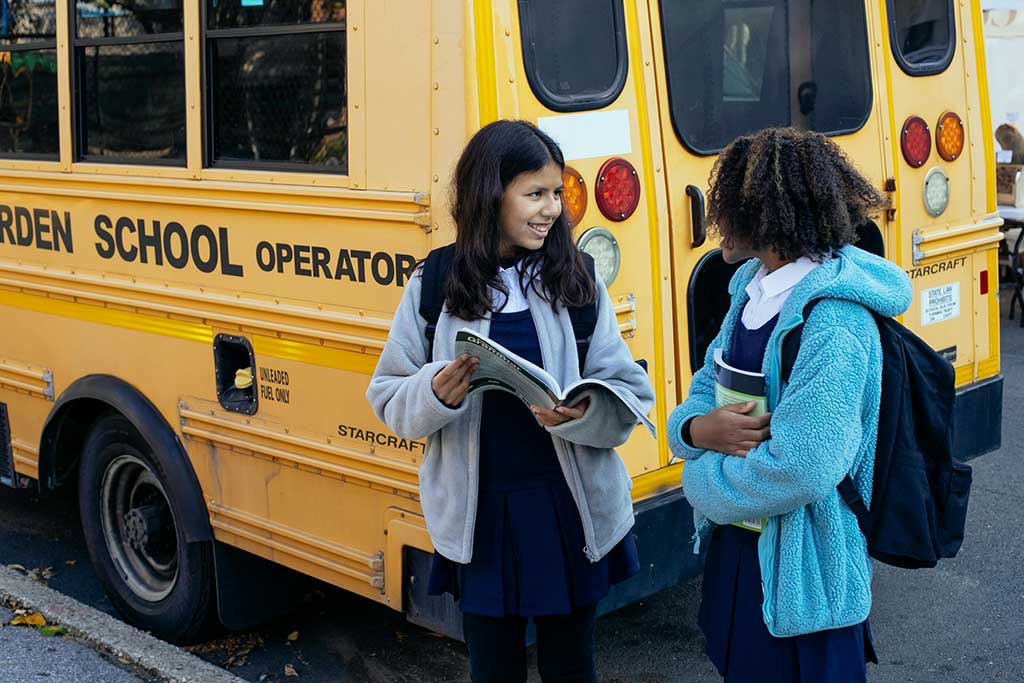
If you’re driving behind a school bus, increase your following distance. The typical following distance uses the three-second rule, so add a few seconds to that for driving behind a bus. It will give you plenty of time to stop once the bus starts slowing down.
And remember, it’s illegal in all 50 states to pass a school bus that has stopped to load or unload children. Other bus laws can vary by state, so check to see the specifics of your state before venturing out on the road.
Consider these additional rules when driving around school buses:
- Yellow flashing lights indicate the bus is preparing to stop to load or unload children. You should slow down and prepare to stop your vehicle.
- Red flashing lights and extended stop arms signify the bus has stopped and children are getting on or off. You must stop your car and wait until the red lights stop flashing, the extended stop-arm is withdrawn, and the bus begins moving.
- The area 10 feet around a school bus is the most dangerous for children. So, make sure you stop far enough back to allow space for the kids to safely enter and exit the bus.
- Be alert. Children can be unpredictable, and they tend to ignore hazards and take risks. Don’t be surprised if you see a child dart into the street suddenly.
- Even when lights aren’t flashing, watch for children, particularly in the morning or mid-afternoon, around school arrival and dismissal times. Pay attention as you back out of a driveway, or drive through a neighborhood, school zone or bus stop.
DID YOU KNOW?
School buses are the most regulated and safest vehicles on the road. They’re designed with special construction to be safer than passenger vehicles in preventing crashes and injuries. And in every state, stop-arm laws exist to protect children from other motorists.
Keep your eyes on the road
Talking or texting on your cell phone, eating, changing your music, putting on makeup and much more are huge distractions. Pulling your eyes off the road for even a few seconds can have big consequences.
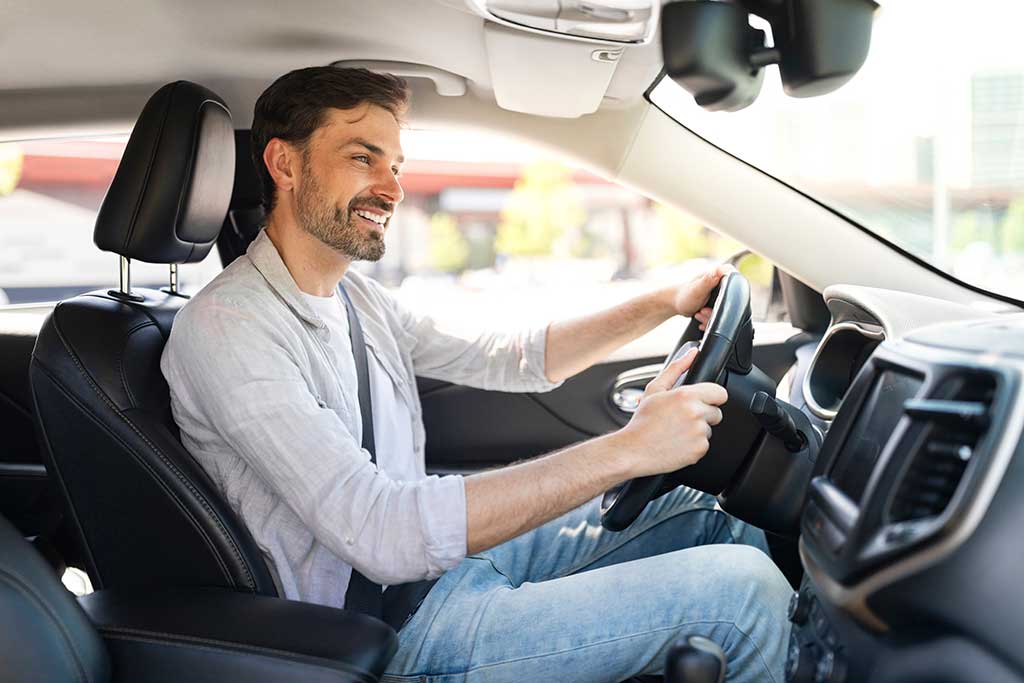
Sending or reading a text takes your eyes off the road for about five seconds, according to NHTSA. At 55 mph, that’s like driving the length of an entire football field with your eyes closed. That’s a scary thought.
There’s an even bigger risk now with the increased foot, bike, and car traffic that comes with the new school year. It all comes down to staying focused and eliminating distractions.
DID YOU KNOW?
Distracted driving accidents claimed 3,308 lives in 2022, according to NHTSA.
Share the road with young pedestrians
As we’ve already covered, when school starts, there’s an increase in cars on the road. But there are also people walking and biking to school. So, make sure you share the road appropriately with them as well.
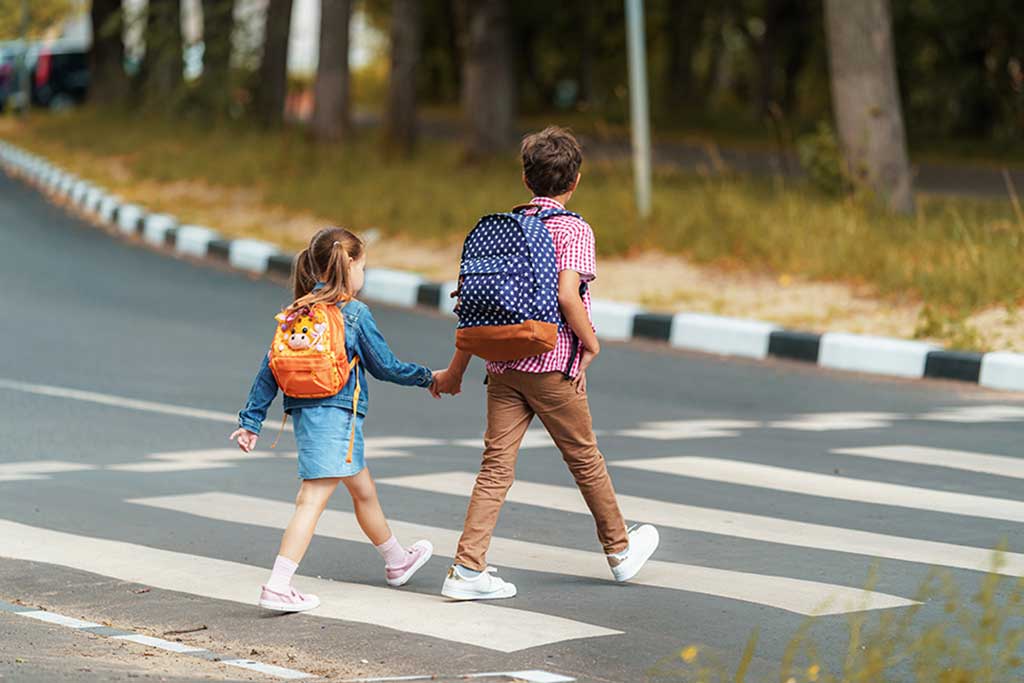
Pay attention no matter where you are, even if you’re not near a crosswalk with a crossing guard. Kids might suddenly choose to cross the street between cars, in the middle of the street, or at an intersection. Don’t focus only on other cars. Stay alert to spot those little pedestrians!
Here are a few precautions that go a long way toward keeping children safe:
- Don't block the crosswalk when stopped at a red light or waiting to make a turn. This forces pedestrians to go around you, which could put them in the path of moving traffic.
- In a school zone when flashers are blinking, stop and yield to pedestrians crossing the crosswalk or intersection.
- Always stop for a school crossing guard holding up a stop sign.
- Take extra care to look for children in school zones, near playgrounds and parks, and in all residential areas.
- Don't honk or rev your engine to scare a pedestrian, even if you have the right of way.
- Never pass a vehicle stopped for pedestrians.
- Make eye contact with pedestrians. If you haven't made eye contact with them, assume they haven't seen you.
DID YOU KNOW?
According to research by the National Safety Council , most of the children killed in bus-related incidents are four to seven years old, and they're walking. They are hit by the bus, or by a driver illegally passing a stopped bus.
Follow the school zone speed limit
The speed limit in a school zone isn’t meant to keep you from where you want to go. They’re set to keep everyone in that area safe.
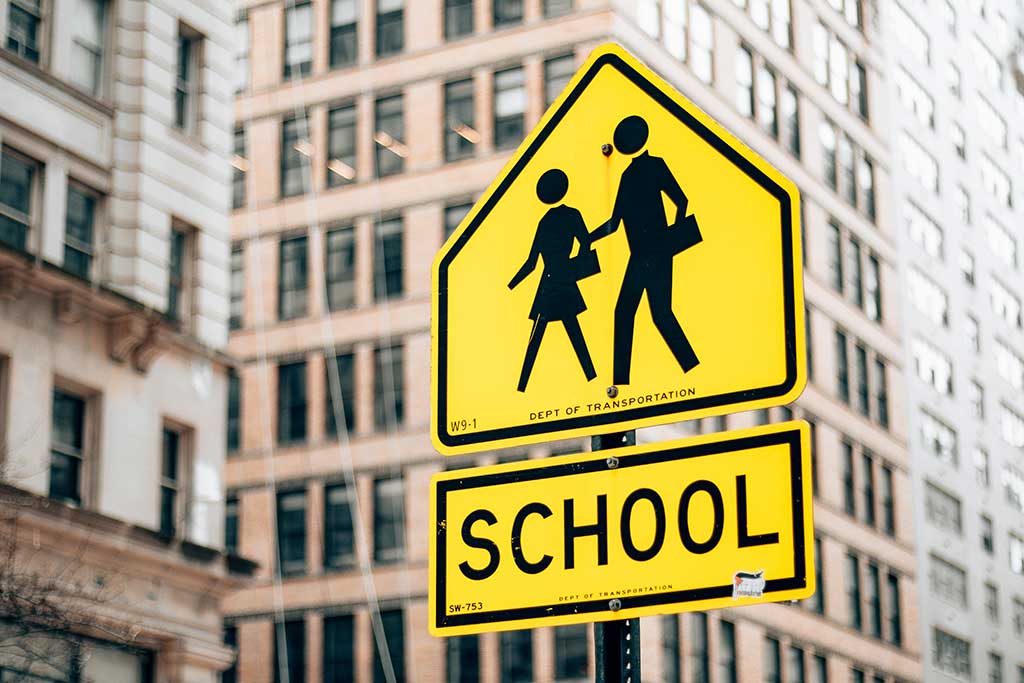
Stay within the speed limits for school zones every time. A typical school zone speed limit in is between 15 mph and 25 mph unless otherwise posted.
When you reach a school zone, you’ll have to slow down at certain times of the day. These signs are usually marked yellow on a standard speed limit sign. And many have flashing lights during the time of day you’re required to slow down. You really can’t miss it!
Always yield to pedestrians, even if they’re not using the marked crosswalks. And don’t try to “beat” the bus to save time. Yield to buses at all times.
Be aware that most states and municipalities have increased fines for breaking traffic laws within school zones. Many areas double or triple speeding fines in and around school zones. It’s important to understand that these increases are meant to deter drivers from speeding through a school zone, risking the lives of young children along the way.
And don’t try to “beat” the bus to save time. Yield to buses at all times.
Be aware that most states and municipalities have increased fines for breaking traffic laws within school zones. Many areas double or triple speeding fines in and around school zones. It’s important to understand that these increases are meant to deter drivers from speeding through a school zone, risking the lives of young children along the way.
DID YOU KNOW?
Most school zones have speed limits of 20 mph or less. Studies have found that 5% of pedestrians hit by a vehicle at 20 mph suffer a fatality. The fatality number increases to 45% at 30 mph, and to 80% at 40 mph. And because of their smaller size, the stats are worse for children, according to NHTSA.
Watch out for the new drivers
When high school is in session, it means there are a lot of teenagers driving on the road. They’re new to driving and much too inexperienced to anticipate many of the hazards or changing road conditions in a school zone.
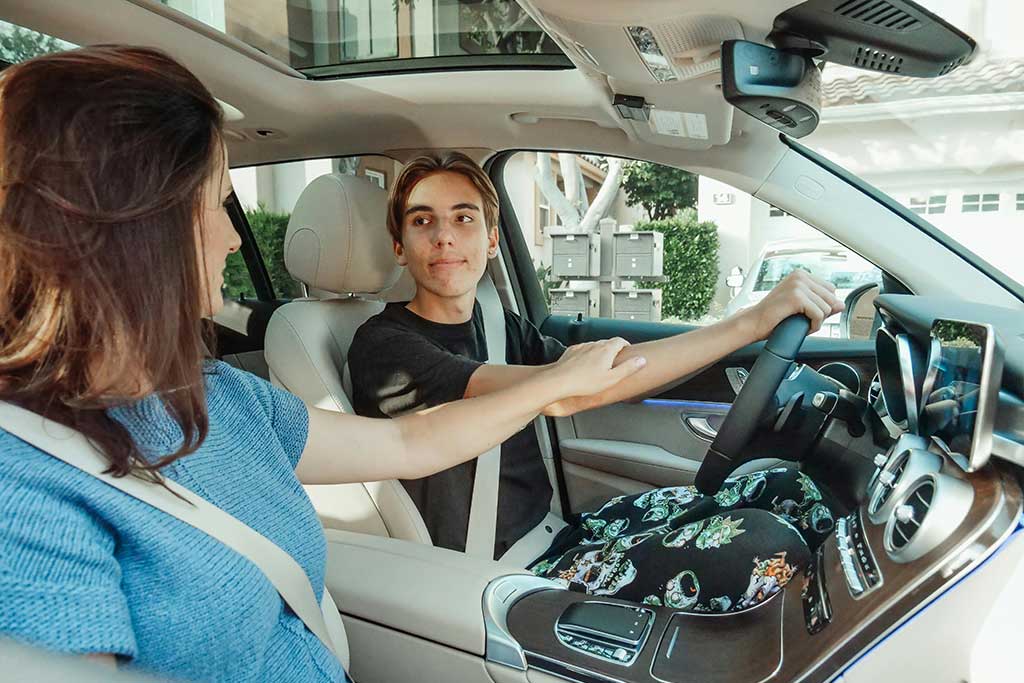
They’re also much more likely to be distracted. A few states have made it illegal to use a cell phone while driving in a school zone, specifically aimed at younger drivers. Check this list to see the rules for your state.
Talking on your cell phone has been shown to reduce reaction time. In fact, texting while driving has been shown to be as dangerous as driving drunk.
And new drivers may not know all the traffic safety laws. Sure, they passed their driving test, but do they really remember all the rules? Probably not. It doesn’t become second nature until you’ve encountered different scenarios from years of driving.
Since you can’t depend on these drivers to be safe (or any drivers, really), always drive defensively to prevent accidents. You can only control your own actions, so be safe and focused!
DID YOU KNOW?
According to the Centers for Disease Control and Prevention (CDC), motor vehicle crashes are the leading cause of death for U.S. teens. The fatal crash rate per mile driven for 16- and 17-year-olds is about three times the rate for drivers 20 and older. Based on police-reported crashes of all severities, the crash rate for 16- to 19-year-olds is nearly four times the rate for drivers 20 and older. The risk is highest at age 16.
We don’t want you to think that back-to-school time is all doom and gloom for drivers. But we do take safe and smart driving seriously.
Going to school can be a fun and exciting time for kids, parents, teachers and others! So, let’s allow them to enjoy it…safely.
Privacy Overview
| Cookie | Duration | Description |
|---|---|---|
| cookielawinfo-checbox-analytics | 11 months | This cookie is set by GDPR Cookie Consent plugin. The cookie is used to store the user consent for the cookies in the category "Analytics". |
| cookielawinfo-checbox-functional | 11 months | The cookie is set by GDPR cookie consent to record the user consent for the cookies in the category "Functional". |
| cookielawinfo-checbox-others | 11 months | This cookie is set by GDPR Cookie Consent plugin. The cookie is used to store the user consent for the cookies in the category "Other. |
| cookielawinfo-checkbox-necessary | 11 months | This cookie is set by GDPR Cookie Consent plugin. The cookies is used to store the user consent for the cookies in the category "Necessary". |
| cookielawinfo-checkbox-performance | 11 months | This cookie is set by GDPR Cookie Consent plugin. The cookie is used to store the user consent for the cookies in the category "Performance". |
| viewed_cookie_policy | 11 months | The cookie is set by the GDPR Cookie Consent plugin and is used to store whether or not user has consented to the use of cookies. It does not store any personal data. |